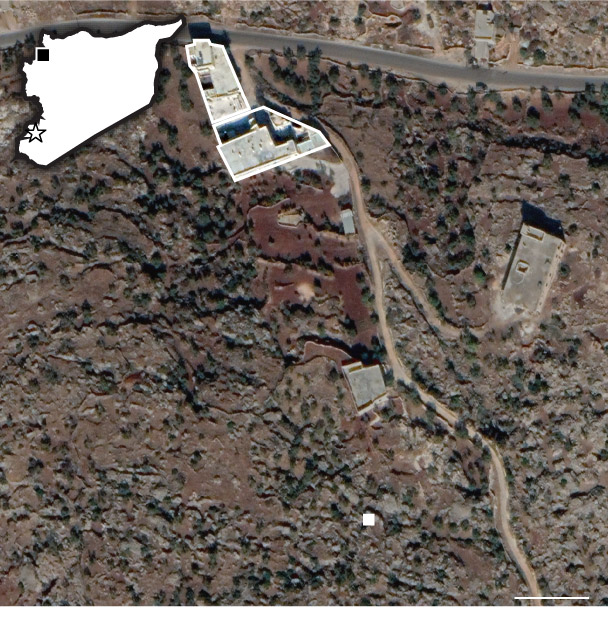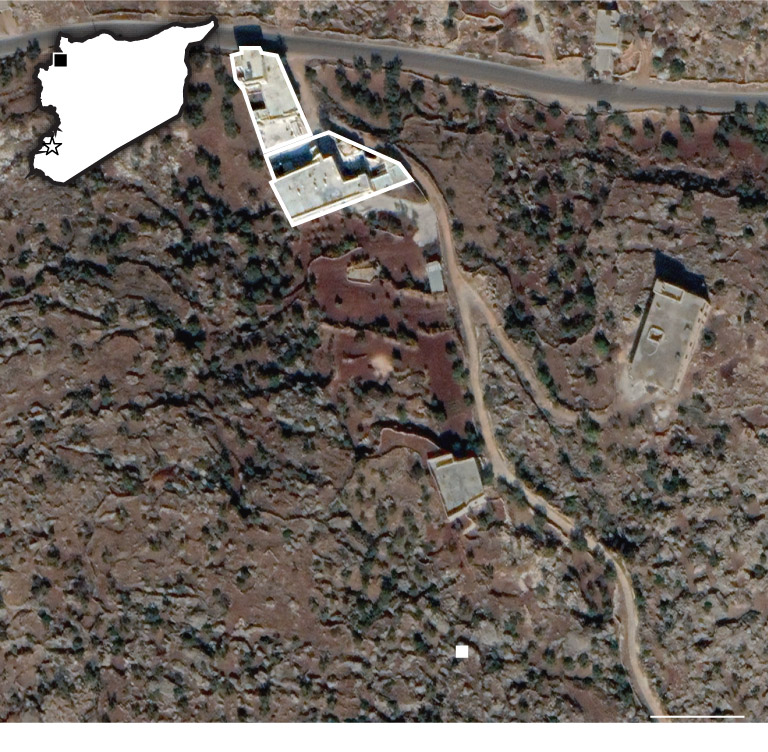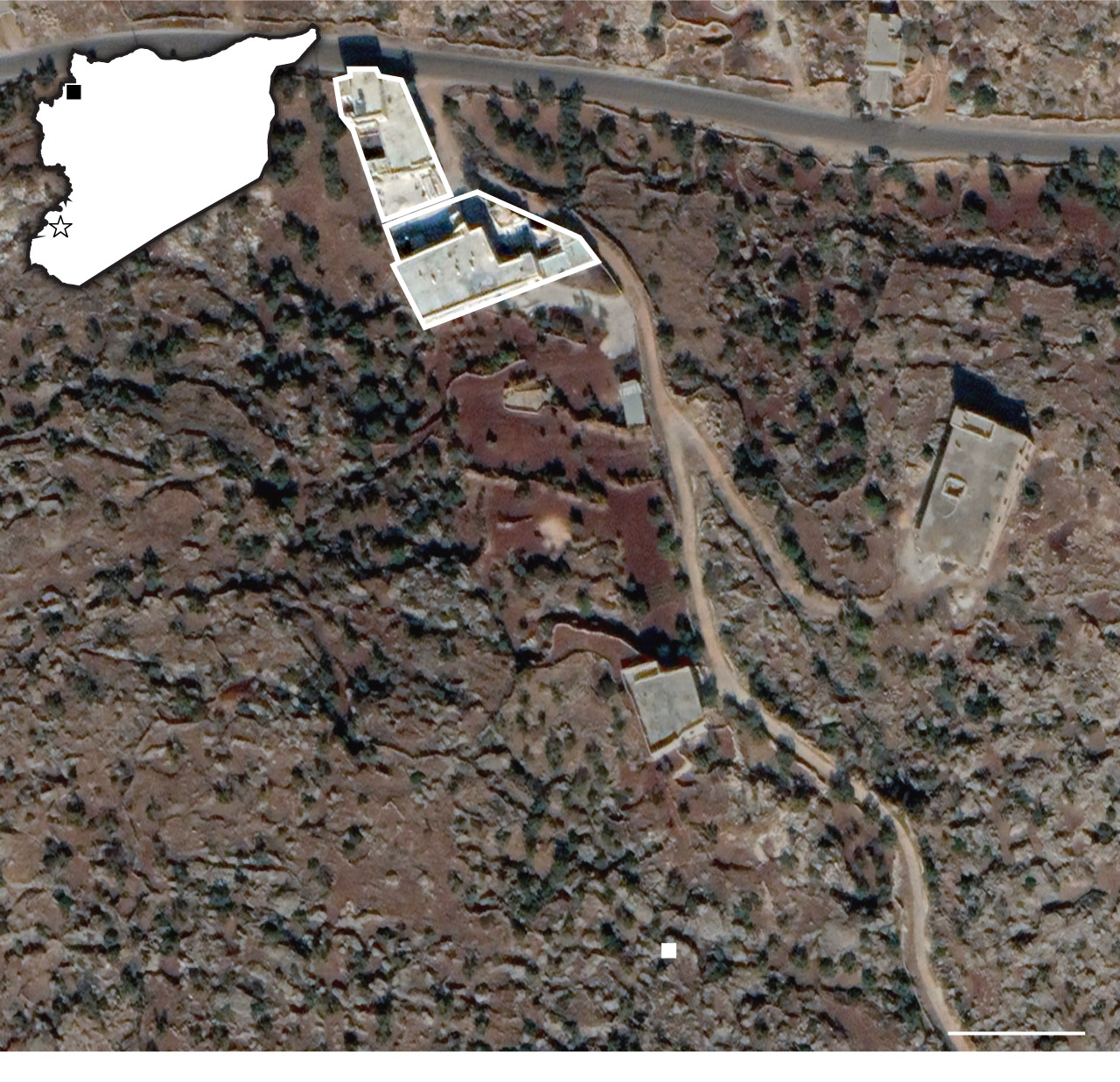US says it killed a civilian, not a terrorist, in Syria drone strike

Lotfi Hassan Misto tended to his animals on May 3, 2023 in Qorqanya, a rural town in northwest Syria. Above, his movements were tracked by an armed Predator drone. When U.S. forces fired a Hellfire missile at the rock outcropping behind his home, commanders were convinced they were attacking a terrorist, officials later said. Instead, a defense official said, the suspected militant who was their target fled and remains at large.
“The investigation determined that U.S. forces misidentified the al-Qaeda target and that a civilian … was struck and killed instead,” the officials wrote in the summary of the investigation, which identifies Misto by name. He was the only one to die, along with several of his sheep, according to video captured by first responders at the scene.
Thursday’s announcement offers little additional information about how U.S. commanders and analysts botched the strike, saying only that it was “conducted in compliance with the law of armed conflict as well as Department of Defense policies.” Defense and CENTCOM.
The military investigation was opened about a month after the Post published its investigation on May 18 of last year.
In 2022, after years of scrutiny, the Pentagon said it would work to reduce such incidents and increase transparency when they occur. The changes, enacted early in the Biden administration, were prompted by numerous investigations by the news media and other independent watchdogs that revealed how faulty intelligence and a lack of clear-eyed analysis contributed to civilian deaths later downplayed or excused within the Department of Defense and White House.
The defense official, who spoke to reporters on condition of anonymity in line with ground rules set by the military, said the investigation showed the botched drone strike was the result of a ” confirmation bias and insufficient red teaming,” a term the Department of Defense uses for personnel responsible for testing decision-making during such operations to ensure accuracy.
“The investigation revealed several problems that could be improved,” the command added, without providing details. “We are determined to learn from this incident and improve our targeting processes to mitigate potential harm to civilians. »
The investigation was prepared by a one-star general, assisted by ten high-ranking military personnel and civilians with relevant expertise, but not involved in this fatal accident, the central command said. The work included interviews with more than 40 witnesses and seeking information from non-governmental organizations. It is unclear whether any of the witnesses interviewed were civilians.
The investigation was completed in November. Officials did not explain why its findings were held up until now.
The lack of information disclosed by the military makes it difficult to assess whether U.S. personnel acted recklessly in the case, said Oona Hathaway, a professor of international law at Yale Law School. Still, the contours of the strike are similar to past incidents, she said, noting that misidentification is a common factor in attacks that end in bloodshed among civilians.
“The U.S. government is not doing enough to learn from its mistakes,” she said, citing her research into other U.S. airstrikes. “The same mistakes happen over and over again. »
Several questions remain unclear, including: who the intended target was, how he was able to escape U.S. forces, whether this failure allowed him to resume his alleged terrorist activities, and, most importantly, how U.S. personnel monitoring Misto never realized that he wasn’t the right person. .
It is also unclear whether anyone will be held accountable for this deadly error.
“We had been tracking Misto for some time, believing he was the target,” the defense official said, declining to describe the duration of the surveillance. Neighbors told The Post last year that these planes had been in circulation for about two weeks.
Priyanka Motaparthy, director of the Project on Armed Conflict, Counterterrorism and Human Rights at Columbia Law School, said the military appears to have conducted a much more thorough investigation than others in the in recent years, but that the response, according to her, is inadequate.
“In every case we hear, there was an unfortunate mistake,” she said, noting that the confusion between Misto and the target was particularly troubling. “There is a legal obligation to put in place procedural safeguards to prevent acting on false intelligence and targeting the wrong person… The fundamental right to life is at stake.”
Misto spent his life in Idlib province, where he married and raised a large family of 12 children – eight daughters and four sons, whom he supported by working as a brick maker. He tended sheep and chickens, staying close to home except when visiting his mosque. Life as a terrorist was absurd, family said The Post, for a man whose priority, outside of work and prayer, was sipping tea with his loved ones just steps from where he was killed.

Lotfi Hassan Misto’s house
Satellite image © 2023 Maxar Technologies via Google Earth

Lotfi Hassan Misto’s house
Satellite image © 2023 Maxar Technologies via Google Earth

Lotfi Hassan Misto’s house
Satellite image © 2023 Maxar Technologies via Google Earth
Central Command’s statement is commendable in her admission of responsibility and promise to learn lessons from the strike, said Joanna Naples-Mitchell, an attorney previously in contact with Misto’s family and director of the reparations program at the Zomia Group, an advocacy nonprofit. humanitarian rights. But the Pentagon’s immediate and sustained assertions about Misto’s ties to terrorism were damaging, she said.
“Going forward, the Department of Defense should be careful not to make prejudicial statements regarding civilian status once an investigation has been initiated,” she said in a statement. “In this case, such statements caused further harm to a family already grieving the loss of a father, brother and breadwinner. This too should be a lesson learned.
Omar Nezhat in Idlib, Syria, Sarah Dadouch in Beirut and Imogen Piper in London contributed to this report.
washingtonpost





